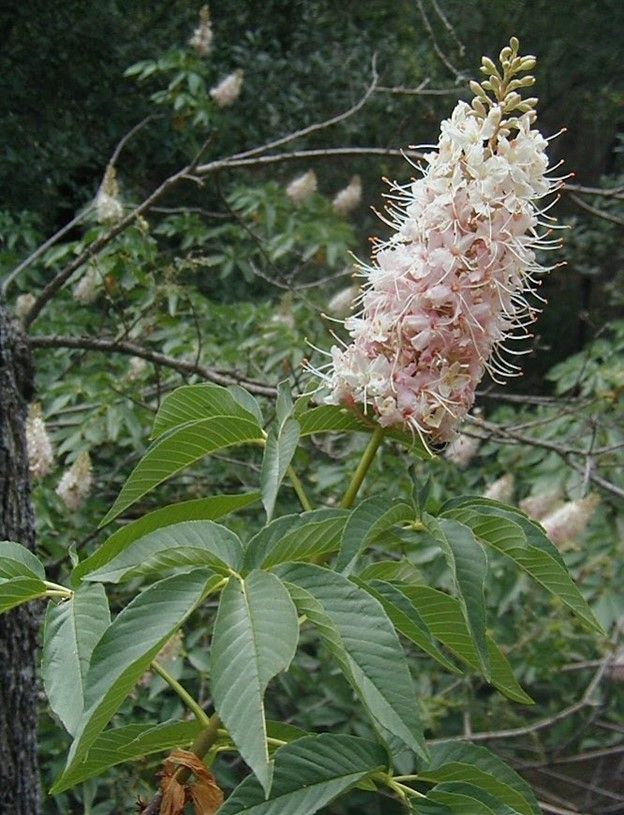Monumental Questions - What is the one species of shrub that flowers long before all the others in the Berryessa Snow Mountain National Monument?

California Buckeye leaves and flowers. Photo by Putah Creek Council
If you visit the Berryessa Snow Mountain National Monument right about now, you might notice that one species of shrub is already leafing out while most of the other species are just barely starting to show leaf buds. The species that is beginning to show off its leaves is most likely a California buckeye (Aesculus californica). It is native to California and its range is fairly widespread throughout the state and thrives in a variety of habitat conditions.
The California buckeye is a relatively large shrub, some can be up to 30 feet, usually with multiple stems. It has smooth, silvery gray bark and the leaves are palmately compound (think of your hand with your fingers spread open) usually with five leaflets. The leaves are quite delicate and sensitive to temperature changes. The shrub begins to leaf out early in the season when water is historically plentiful. The California buckeye also flowers much earlier in the season than most other adjacent shrub species. The white to light pink, roughly five-inch long flower clusters are sometimes compared to the shape of a candle and are pleasantly fragrant. But, the fruit of the California buckeye may just be the shrub’s most easily recognizable attribute though. The seeds are about three inches in diameter, orangish-brown and are the largest of any temperate plant species. The fruit hangs on to mature long after the leaves have dropped leaving bare stems decorated nothing but large, round seeds.
The shrubs themselves are long-lived, with the oldest known ranging close to 300 years old. Their leaves, however are not. The California buckeye has adapted nearly perfectly to California’s dry summertime climate. It hangs on to the leaves throughout spring and into the beginning of summer to photosynthesize and store as much food for the dormant period as possible. As the days get longer and hotter and the available moisture decreases rapidly, the shrub drops its leaves and enters its dormant period while other species are competing for scarce moisture and nutrients.
All parts of the California buckeye are toxic to humans and many other animals. The glycoside compounds found in them destroy red blood cells and depress the central nervous system. Native Americas developed a way to leach out the toxin and were able to consume the seeds which are high in carbohydrates. The California buckeye is in the Soapberry family (Sapindaceae). Plants in this family contain the chemical saponin, which when crushed or ground and mixed with water produce a soapy foam. Native Americans used this foam to stun fish, making them easier to catch. The fish were edible as long as they were leached of the toxin by running water. The nectar is even toxic to European honey bees but it is not toxic to and is an important food source to several species of California native bees, butterflies and hummingbirds. California ground squirrels and Black-tail deer have also been documented as being able to consume parts of the shrub.
Many native gardeners love to plant buckeyes in their gardens because they leaf out and flower long before other species do. Once the leaves drop and the flowers become fruit, other species will be ready to take over the garden.
-Kristie Ehrhardt; kehrhardt@tuleyome.org
Tuleyome Land Conservation Program Manager
RECENT ARTICLES






